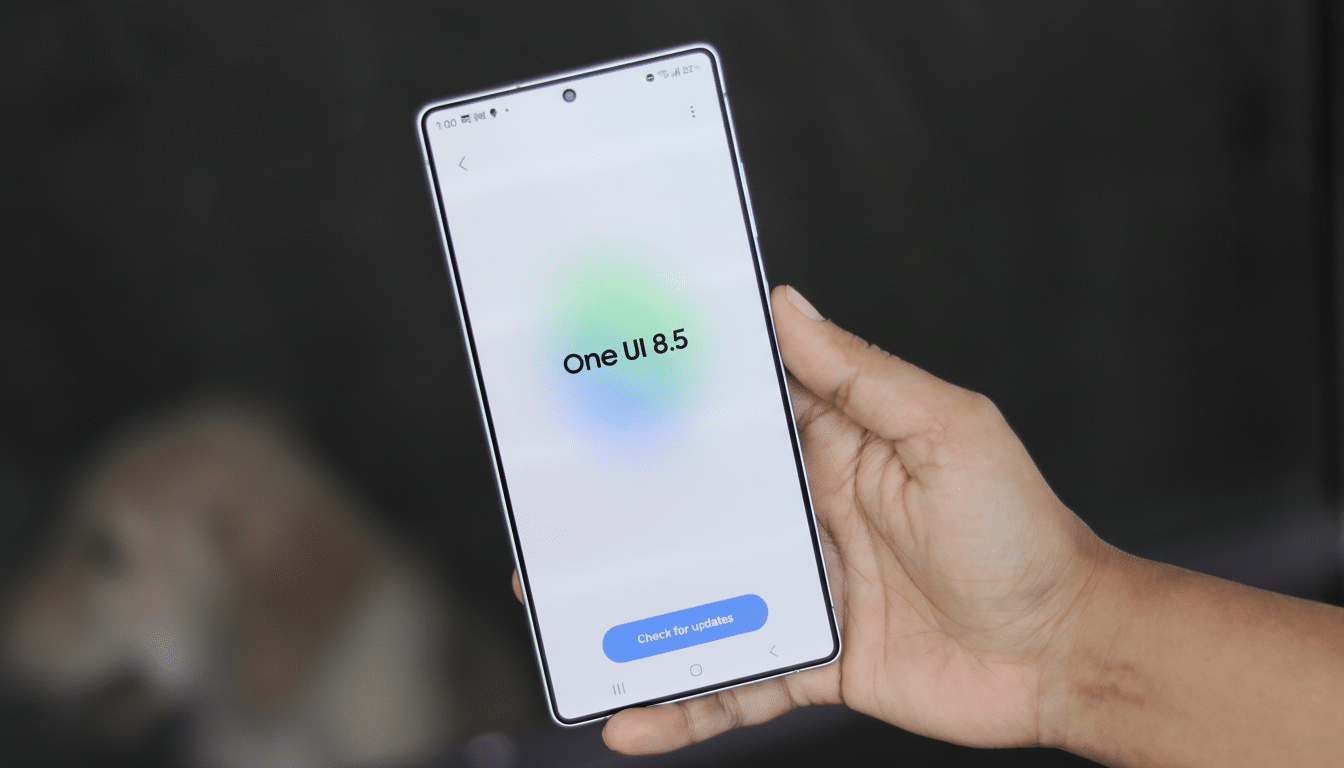Samsung’s next software update may sound routine, but One UI 8.5 appears to mark a giant pivot of strategy.
Leaked builds previously examined by independent researchers on SammyGuru suggest that this is because One UI 8.5 has been crafted atop Android 16 QPR2, not only the base level of Android 16. Telltale build tags — SDK “36.1” and the “BP4A” prefix — match QPR2, which points at Samsung syncing up with Google’s quarterly platform cadence here.

It matters more than you might think. The majority of Android device manufacturers (OEMs) don’t include Google’s quarterly platform releases, waiting for the next annual Android version — typically months later — to incorporate new features. If Samsung departs from that trend, it could mean meaningful Android improvements would reach Galaxy owners that much sooner — possibly by launching on the Galaxy S26 — and developers get new APIs to work with in one of the world’s largest Android install bases without delay.
Why quarterly platform release support changes the game
QPRs are not just patch bundles; they release feature sets at the platform level, APIs, and behavior changes quarterly. As a result, when OEMs eschew them, users have to wait until the following year’s new iteration of Android to get those. A good one, for instance, is Identity Check, which is Google’s new and improved anti-theft system that arrived in Android 15 QPR1. Many non-Pixel devices didn’t even receive it when they got their Android 16 updates, months ago.
Tied to Android 16 QPR2, Samsung is effectively cutting that difference. It’s the closest QPR-era adoption of a major OEM since Android 12L, and it also aligns nicely with Google’s Trunk Stable process to help partners more easily integrate the platform’s most recent changes. If Samsung keeps progressing down this path, that could eventually take Galaxy software tracking much closer to Google’s quarterly beat — a win for users, for developers, and for platform consistency.
What We Could Possibly Get With One UI 8.5
Media and sound are due for subtle yet substantial changes. IAMF decoding work suggests we could see more efficient spatial audio delivery, and an output switcher feature called Personal Audio Sharing may help facilitate impromptu audio sharing sessions with friends. New AAudio APIs present lower-latency paths for pro audio apps, and an HDR/SDR brightness slider offers more precision when switching between high dynamic range and standard content. Companion device management and MediaRouter privacy changes also help bring multi-device playback into this decade.
Another step is taken on privacy and security. Look for USB Advanced Protection support to put a stop to risky data transfers on locked USB devices. Local parental controls supplement the device-independent oversight by not being cloud-based. Secure Lock Device and the Phone Theft Protection toggle offer extra protection from theft, while Identity Check provides even broader coverage of apps by locking down sensitive actions, even if a thief knows your passcode.

Developers and power users aren’t left out in the cold. Support for graphical apps in the Linux terminal suggests more involved workflows, particularly for those who use DeX. Widget interaction statistics provide better visibility into the home screen experience. Early warnings for 16KB page size compatibility, improved profiling, and more robust multi-display testing should lower the incidence of edge-case bugs. As is always the case, Samsung’s going to cherry-pick user-facing elements — it could overlook duplicative features like icon theming, or certain lock screen widgets from One UI.
What Does This Mean For Galaxy Owners And The Android Ecosystem
For users, it’s a matter of time-to-benefit. QPR-aligned releases shorten the cycle for future security measures, media enhancements, and usability updates. Developers, on the other hand, get to pick up QPR APIs on Galaxy hardware ahead of time, meaning features can hit a broader user base more immediately rather than being Pixel-only for a year.
It is difficult to exaggerate the scale. Samsung is regularly ranked by trackers including Counterpoint Research as the biggest seller of Android devices by shipments. When Samsung moves the platform forward, everyone else who makes Android phones feels it — along with the vast majority of people running Google’s OS that are not using its own devices. Combine that with Samsung’s lengthened update policy — recent flagships are promised up to seven years of support — and QPR-based rollouts can influence the ecosystem over and over again, even after a game-ending fail on the field.
Rollout expectations and what to watch closely
Leaks indicate that One UI 8.5 will arrive with the Galaxy S26. That said, features found in early builds can be different by the time they launch, and not all QPR2 additions are set in stone. Samsung has done this in the past, implementing Google’s platform work while keeping its own UX decisions in place, meaning that some overhead can be cut. Older Galaxy devices could get a subset of the features, depending on hardware and support windows.
The actual storyline, though, is the trajectory: Assuming Samsung continues to use QPR-based underpinnings beyond the realm of One UI 8.5, the true difference in time between when Google’s platform releases hit and when they’re ready for Galaxy devices could permanently become abbreviated. That would make One UI 8.5 more of a break from the long-standing update cadence rather than just another point release — a pace in which core Android developments come to Galaxy handsets as soon as they’re available and not a year after the fact.

